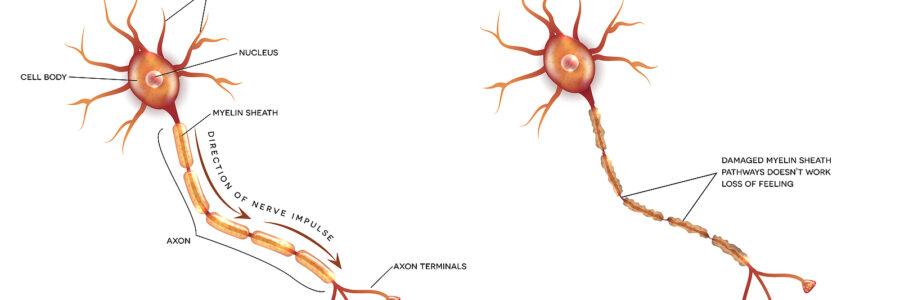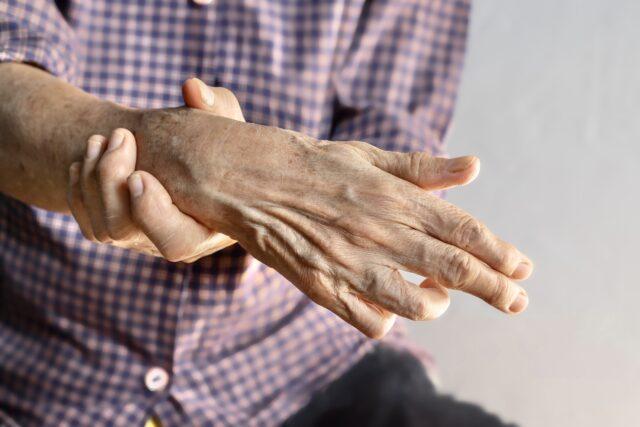 Understanding Massage and Its Impact on Nerve Damage:
Understanding Massage and Its Impact on Nerve Damage:
Massage therapy has long been revered for its myriad benefits, from relieving muscle tension to promoting relaxation and enhancing overall well-being. One area of particular interest is its potential impact on nerve damage. While the benefits of massage for muscle-related issues are well-documented, its effects on nerve damage require a more nuanced understanding. In this comprehensive guide, we’ll delve into the relationship between massage and nerve damage, exploring how different massage techniques can aid in nerve repair and provide relief from nerve pain.
Understanding Nerve Damage
Nerve damage, or neuropathy, can occur due to various reasons, including physical trauma, medical conditions like diabetes, infections, and exposure to toxins. Symptoms of nerve damage can range from mild tingling and numbness to severe pain and muscle weakness. Depending on the severity and cause, nerve damage can significantly impact a person’s quality of life.
How Massage Therapy Works
Massage therapy involves the manipulation of soft tissues, including muscles, tendons, and ligaments, to promote relaxation, reduce pain, and enhance overall body function. The primary mechanisms through which massage therapy exerts its effects include:
Improved Circulation: Massage enhances blood flow to the targeted areas, which can promote healing by delivering essential nutrients and oxygen to damaged tissues.
Pain Relief: Through the stimulation of sensory receptors, massage can help reduce pain by blocking pain signals to the brain.
Muscle Relaxation: By alleviating muscle tension and reducing stiffness, massage can improve mobility and decrease discomfort.
Stress Reduction: Massage promotes relaxation and reduces stress levels, which can have a positive impact on overall health and well-being.
Types of Massage Techniques
Several massage techniques can be beneficial for individuals with nerve damage. Understanding the unique characteristics of each technique can help in choosing the most appropriate therapy:
Swedish Massage: This technique involves long, gliding strokes, kneading, and circular movements. It is effective for promoting overall relaxation and improving circulation, which can be beneficial for mild nerve pain.
Deep Tissue Massage: This type focuses on deeper layers of muscle and connective tissue. It can be particularly useful for chronic pain and tension resulting from nerve damage, as it helps release deeply held tension.
Neuromuscular Therapy (NMT): Also known as trigger point therapy, NMT targets specific points of pain in the muscles, which can correspond to nerve pain. By applying pressure to these trigger points, NMT can help release tension and reduce referred pain.
Myofascial Release: This technique targets the fascia, the connective tissue surrounding muscles and nerves. By applying sustained pressure, myofascial release can help alleviate restrictions in the fascia, reducing pain and improving mobility.
Reflexology: Focusing on pressure points in the feet, hands, and ears, reflexology can stimulate nerve pathways and promote relaxation throughout the body. This can be particularly beneficial for systemic nerve conditions like peripheral neuropathy.
Massage Therapy for Specific Nerve Conditions
Different types of nerve damage may respond to massage therapy in various ways. Here are a few common conditions and how massage can help:
Carpal Tunnel Syndrome: Characterized by numbness and tingling in the hands and fingers, carpal tunnel syndrome can benefit from deep tissue massage and myofascial release to alleviate pressure on the median nerve.
Sciatica: This condition involves pain radiating along the sciatic nerve, often affecting the lower back and legs. Neuromuscular therapy and deep tissue massage can help relieve muscle tension and reduce nerve compression.
Diabetic Neuropathy: Nerve damage resulting from diabetes can cause pain and numbness in the extremities. Reflexology and gentle Swedish massage can improve circulation and provide symptomatic relief.
Post-Surgical Nerve Damage: After surgery, nerve damage can occur due to trauma or inflammation. A combination of techniques, including Swedish massage and myofascial release, can aid in the healing process and reduce scar tissue formation.
Considerations and Precautions
While massage therapy can offer significant benefits for individuals with nerve damage, it is essential to approach it with caution. Here are some important considerations:
Consultation with Healthcare Providers: Before starting massage therapy, individuals with nerve damage should consult with their healthcare providers to ensure it is safe and appropriate for their specific condition.
Qualified Massage Therapists: It is crucial to seek massage therapists who are trained and experienced in dealing with nerve-related issues. A qualified therapist can tailor the treatment to the individual’s needs and avoid exacerbating the condition.
Communication: Open communication with the massage therapist is vital. Individuals should inform their therapists about their symptoms, pain levels, and any changes in their condition to ensure the treatment is effective and safe.
Gradual Approach: Starting with gentle techniques and gradually increasing intensity can help the body adapt to the therapy and prevent any adverse reactions.
Conclusion
Massage therapy offers a promising complementary approach for managing nerve damage. By improving circulation, reducing pain, and promoting relaxation, various massage techniques can aid in the recovery process and enhance the quality of life for individuals with nerve-related conditions. However, it is essential to approach massage therapy with careful consideration and professional guidance to ensure safety and efficacy. With the right approach, massage can be a valuable tool in the journey towards nerve health and overall well-being.
For more information about how massage can benefit nerve damage contact our local massage therapy school campus.

Lupus & Massage Therapy
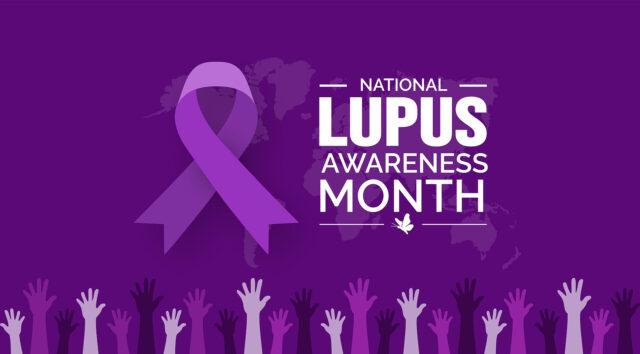 Lupus, also known as Systemic Lupus Erythematosus (SLE), is a chronic autoimmune disease that can affect various parts of the body, including the skin, joints, kidneys, heart, and lungs. The condition occurs when the immune system mistakenly attacks healthy tissues in the body, causing inflammation and damage.
Lupus, also known as Systemic Lupus Erythematosus (SLE), is a chronic autoimmune disease that can affect various parts of the body, including the skin, joints, kidneys, heart, and lungs. The condition occurs when the immune system mistakenly attacks healthy tissues in the body, causing inflammation and damage.
While the exact cause of Lupus is unknown, it is believed to be a combination of genetic, environmental, and hormonal factors. Women are more likely to develop the condition than men, and it often appears between the ages of 15 and 44.
The symptoms of Lupus can vary widely, depending on which part of the body is affected. Common symptoms include fatigue, joint pain and stiffness, skin rashes, fever, hair loss, and chest pain. In some cases, Lupus can lead to more serious complications, such as kidney failure, heart attacks, and stroke.
There is currently no cure for Lupus, but treatment options are available to manage symptoms and prevent complications. These may include medications such as anti-inflammatory drugs, corticosteroids, and immunosuppressants, as well as lifestyle changes such as getting regular exercise, eating a healthy diet, and avoiding triggers that can worsen symptoms.
Massage therapy is one complementary therapy that may help people with Lupus manage their symptoms and improve their overall quality of life. Here are some of the ways that massage therapy can benefit patients with Lupus:
- Reducing Pain and Stiffness: Massage therapy can help reduce muscle and joint pain and stiffness, which are common symptoms of Lupus. Massage can help increase blood flow to the affected areas, promote the release of endorphins (natural painkillers), and reduce inflammation.
- Promoting Relaxation and Stress Relief: Stress can worsen symptoms of Lupus, and many people with Lupus experience anxiety and depression as a result of their condition. Massage therapy can help promote relaxation and reduce stress, which may help improve overall mental health.
- Improving Sleep: Many people with Lupus struggle with sleep disturbances, including insomnia and restless sleep. Massage therapy can help promote relaxation and improve sleep quality, which may help reduce fatigue and improve overall well-being.
- Boosting the Immune System: Massage therapy has been shown to stimulate the immune system and increase the production of white blood cells, which are responsible for fighting off infections. This can be particularly beneficial for people with Lupus, whose immune systems are compromised.
- Providing a Safe and Nurturing Environment: Many people with chronic illnesses such as Lupus may feel isolated or disconnected from others. Massage therapy provides a safe and nurturing environment where patients can feel cared for and supported, which can have a positive impact on their overall mental and emotional well-being.
It is important to note that massage therapy should not be used as a substitute for medical treatment for Lupus. However, it can be a valuable complementary therapy that can help improve symptoms and overall quality of life for people with Lupus.
If you are considering massage therapy as a treatment option for Lupus, be sure to talk to your healthcare provider first. They can help you determine if massage therapy is a safe and appropriate option for you, and can also recommend qualified massage therapists who have experience working with patients with Lupus.

Seattle Massage Therapy Career
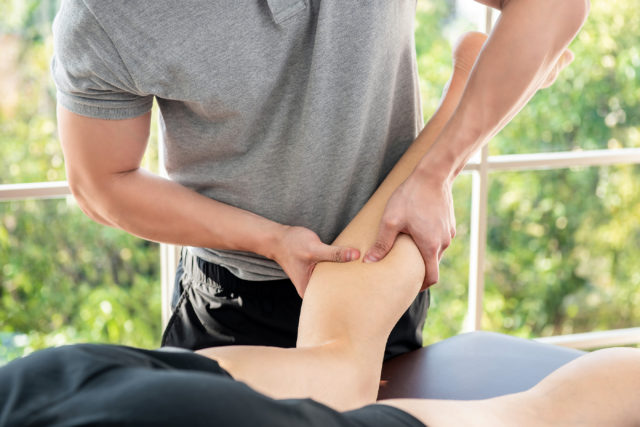
Currently, there are around 12,000 massage therapists working throughout the state of Washington to help the more than 7 million residents of the state find relief from the pain or discomfort associated with injuries, anxiety, and stress. According to the U.S. Bureau of Labor Statistics (BLS), the average annual salary for massage therapist in Washington is $62,520, making it one of the highest-paying states for massage therapists across the country. The cities with the highest demand for massage therapists in the Evergreen State include, in no particular order, Seattle, Spokane, Tacoma, Olympia, and Kennewick. Read on to learn about the current career outlook for massage therapist in Seattle and Washington State.
Demand and Career Outlook for Massage Therapists in Washington
According to the BLS, the state of Washington has the fourth highest demand for massage therapists across the U.S, and consistently posts high employment figures for massage therapists. In fact, the BLS projects the demand for massage therapists in the Evergreen State to grow by more than 40% over the next decade, leading to a shortage of massage therapists throughout the Evergreen State. Additionally, it could cause wages for massage therapists to rise, making the state and its cities, including Seattle, even more attractive for massage therapists.
Career Opportunities in Seattle
As mentioned earlier, Seattle is one of the best cities for massage therapist, not only in Washington State, but also across the entire country. This is because of several reasons. For starters, Seattle is a great place to set up a freelance massage therapy operation. For example, you can set up a mobile massage therapy operation, allowing you to make home and office visits. Secondly, if you decide to join the ranks of employed massage therapists in Seattle, Seattle offers numerous job opportunities for massage therapists. Some of these opportunities include:
• in-home aid and other personal care services career opportunities
• being the massage therapist in a team of health practitioners
• recreation and amusement facilities including spas and high-end hotels
• health facilities including long-term rehabilitation care facilities and hospitals
• working as a massage therapists for a sports team, such as the Seattle Mariners or Seattle Seahawks
Washington Massage Therapy Licensure Requirements
To work legally as massage therapist in Washington and Seattle, you must be licensed by the state’s department of health. The licensure requirements include, among others, completing 500 hours or more from a state-approved massage therapy program as well as taking and passing a national massage licensing exam.
Conclusion
The state of Washington is a great place for massage therapists looking to start and grow their careers, with the BLS projecting the demand for massage therapist in the state to grow by more than 40% over the next decade, potentially translating to higher wages. Some of the highest-paying cities for massage therapist in the Evergreen State include Seattle, Tacoma, Olympia, and Kennewick.
To learn more about the career outlook as a massage therapist contact our Seattle Massage School Campus
Our sister massage school Seattle Clinical Massage School can also offer additional information about attending massage therapy school in Seattle.

IT Band Syndrome
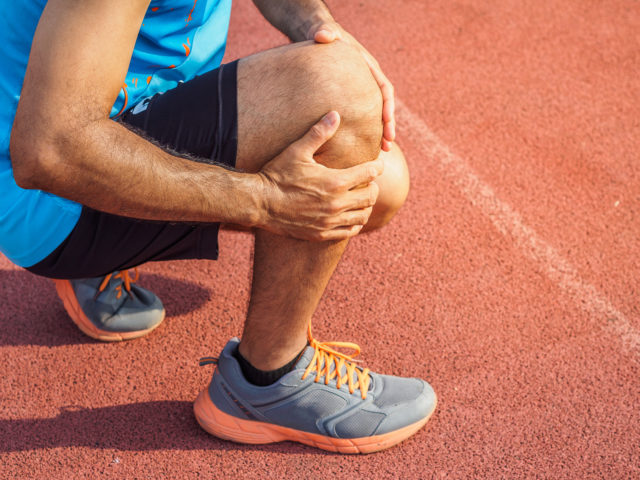
Did you know that engaging in activities that involve repetitive flexing and extending of knees can cause iliotibial band syndrome? Well, studies show that walking long distances, cycling and athletics, among others are some of the contributing factors. As a nurse, physical therapist, fitness coach or yoga instructor, you will always encounter clients with IT band injuries. According to experts, incorporating massage therapy with conventional treatment is one of the best approaches to manage IT band syndrome.
What Is IT Band Syndrome?
The IT band is a thick connective tissue that originates from the pelvic bone and extends laterally to the shinbone. The fibrous band works with hip muscles to stabilize lateral movements of the hip and knee. However, overworking the connective tissue with activities that require repetitive knee flexion and extension causes IT band syndrome. The overuse movements create friction between the band and the lateral femoral epicondyle, thus, causing discomfort when exercising, or moving. Signs and symptoms of IT band syndrome include:
- Patient reports feeling an irritating pain along the lateral side of the hip and the femoral epicondyle during motion.
- There is notable inflammation and swelling on the outer part of the knee.
- Slight pain is felt at the beginning of an exercise and increases with intensity as the activity progresses.
- Pain in the gluteal region caused by overstretching gluteus muscles.
- Experiencing a popping pain that results from the rubbing of IT band against your knee during movement.
- Tenderness on the lateral femoral and tibia epicondyles upon palpation
Diagnosing the IT Band Syndrome
Despite causing knee pain, iliotibial band syndrome is not the only cause of knee discomfort. Before making your diagnosis, ensure you take a history of the client’s complaints and their daily activities. Usually, the iliotibial band syndrome affects people who engage in activities that put a constant strain on the knees. A client who reports being a runner, bicyclist, hiker or athlete might be a candidate of iliotibial band syndrome.
After taking the history, the next essential step is to conduct a comprehensive physical assessment to determine the precise effected location. You can use some tests such as Noble’s test to assess for pain in the lateral femoral condyle. Additionally, using an Ober’s test will assist you in examining the IT band for tightness. A comprehensive physical examination will give you an insight on areas that need massage therapy; to determine the appropriate techniques for myofascial release.
Managing IT Band Contracture Syndrome with Massage Therapy
As a professional health worker, ensure that massage therapy is in your to-do interventions for iliotibial band syndrome. Offering a massage along with traditional treatment has proved to be effective in enhancing recovery from the IT band syndrome. Below are the benefits of massaging your patients:
- Relieve Lateral Leg Pain
In most cases, it’s a nagging pain resulting from IT band overuse that forces patients to seek professional intervention. Performing myofascial release massage on the lateral side of the effected leg relaxes the fibrous band and muscles from tension — thus alleviating the pain.
- Promote Healing
Nowadays, unique massage techniques aim to not only relieve pain but also to promote tissue healing. Addressing trigger points and hypertonicities of the leg muscles enhances blood circulation. Improved tissue perfusion allows delivery of oxygen and nutrients to enhance the healing of the injured tissues.
- Restore flexibility and Improve Mobility
A patient who is suffering from IT band syndrome often complains of inability to move comfortably. Massage therapy resolves muscle stiffness and tenderness, therefore refining motion and flexibility. Therefore, after several sessions, your patient will be able to resume daily activities with ease.
- Improve Posture
When the pain is intense, most people adopt bad postures in response to the discomfort. As a massage therapist, you are equipped with unique skills to resolve tension and inflammation of the effected regions. The relaxation and flexibility of the leg enable the patients to assume their normal and healthy posture.
- Alleviate Stress and Anxiety
Besides enhancing physical fitness, massage treatment helps to relieve the body from stress. Reduced anxiety in patients with IT band syndrome promotes healing and improves their emotional well-being.
What is the prognosis of Iliotibial Band Syndrome?
Typically, if you utilize the right treatment modalities, the prognosis of IT band friction syndrome is excellent. For optimum results, it is crucial to use a multifaceted approach when treating patients. Whether you are a nurse, physical therapist, or a fitness coach, integrating massage therapy with conventional treatment will yield a positive outcome.
Ultimately, adding massage therapy to your healthcare profession not only improves healthcare delivery to your clients but also makes you indispensable. Want to learn more about managing IT band syndrome with massage therapy? Contact our Seattle massage therapy schools today to discuss your massage career and educational options in Seattle, Tacoma, or Bellingham.
I addition you can also contact our partner massage therapy school; Seattle Clinical Massage School for information about a massage therapy career in Seattle, Washington.
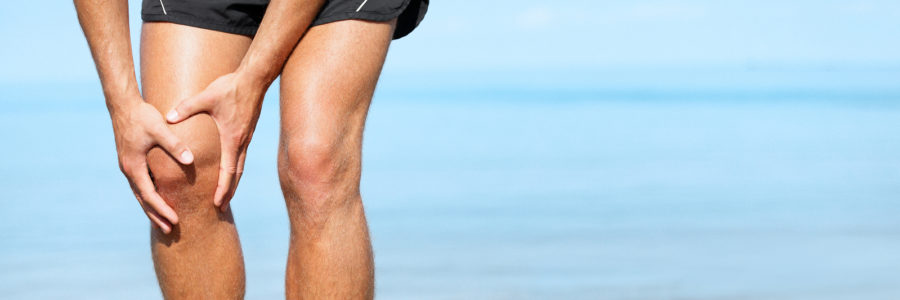
Anterior Cruciate Ligament Tears
 An Anterior Cruciate Ligament (ACL) tear is an injury impacting major ligaments in the knee. It is a key concern for many sports enthusiasts because such ACL tears occur mostly during sports activities that involve jumping, landing, sudden stops, or changes in direction.
An Anterior Cruciate Ligament (ACL) tear is an injury impacting major ligaments in the knee. It is a key concern for many sports enthusiasts because such ACL tears occur mostly during sports activities that involve jumping, landing, sudden stops, or changes in direction.
Examples of such sports include football, basketball, soccer, or downhill skiing. Also, these ruptures are more common in women than in men because of the difference in anatomy.
Once you sustain an ACL injury, you might require surgery, but that depends on factors like your activity level and severity of damage. With advancements in the field of reconstruction surgery, athletes can benefit from hamstring grafts, patellar tendon graft along with allografts. These prove effective in restoring both function and strength to the injured knee.
Even so, the ability of an athlete to go back to an active lifestyle successfully/full recovery after ACL reconstruction depends on the absence of three prevalent complications.
- Quadriceps weakness
- Flexion contracture (of the muscle group)
- Patellofemoral pain syndrome (PFPS)
Many physicians will use the patellofemoral pain syndrome as a “catch-all” diagnosis for the myriad of symptoms associated with anterior knee pain, especially after ACL reconstruction.
Signs and Symptoms of Anterior Cruciate Ligament Rupture
Once you sustain the injury, you will hear a popping sound from your knee. Other common symptoms include:
- Pain and swelling
- Loss of full range motion
- Discomfort when walking
- Joint tenderness
- Inability to bear leg weight even with minimal pain
- Feeling of instability
Causes
Several movements can cause an anterior cruciate ligament tear. These include:
- Slowing down during a run
- Incorrectly landing from a jump
- Rapidly changing direction
- Stopping suddenly
- Direct contact or collision like during a tackle
- When a knee is twisted or bent backward
While sport accidents are the most common causes of ACL injuries, you can sustain an ACL tear from missing a step in a staircase, falling off a ladder, or being in a car accident.
Risk factors
There are several risk factors for an ACL injury, and they include:
- Gender
- Active involvement in sports like football, gymnastics, basketball, soccer, and downhill skiing
- Using defective sport equipment like ski bindings
- Wearing ill-fitting sportswear
- Having a history of an ACL tear
Outcome and treatment
When you experience an ACL injury, you might not be able to walk correctly. An ACL injury causes a partial or complete tear of tissue and is usually very painful. Once you visit a doctor, they will recommend treatment based on the severity of the injury. Treatment options include first aid, medications, physical therapy, or surgery.
Massage Therapy for Anterior Cruciate Ligament Tear
One aspect of physical therapy for ACL is massage. Therapeutic massage therapy has the following benefits:
- Reduce pain and swelling (inflammation)
- Increase blood circulation and joint mobility
- Accelerate the healing process
- Lower the aggregation of scar tissue forming around the site of the injury
During a therapeutic massage, therapists target surrounding muscles, joints, or other specific structures to reduce strain. And once you’ve achieved success in ensuring they’re relaxed, a physician can then start restoring them to their proper alignment and flexibility.
Massage therapy is considered a safe and effective complementary treatment for many muscle and joint problems—including ACL. The type of massage and the number of sessions you will require will depend on your injury. At the end of all of your sessions, you will have regained full range of motion without any pain.
While massage therapy is effective in treating ACL, it must be done correctly for maximum results. Ensure you get your massage therapy from a professional therapist. If you would like to learn more about massage therapy or attend massage school, call us today. Also contact the Northwest Academy admissions department for any massage related questions.

Degenerative Disc Disease & Massage
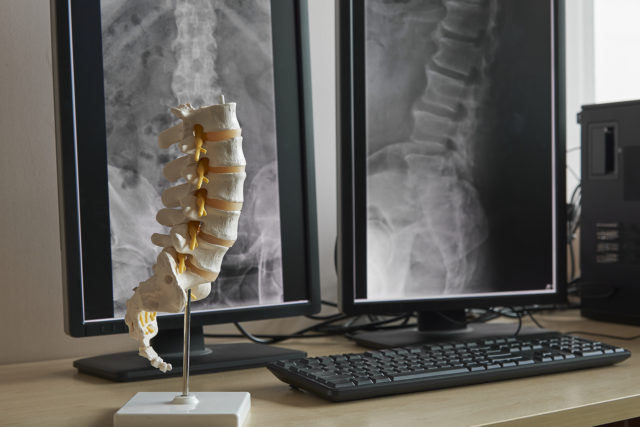
Degenerative disc disease (DDD) is a medical condition where one or more discs in the back lose strength. Despite the name, degenerative disc disease isn’t technically a disease but a progressive condition that worsens over time due to wear and tear, or injury.
The discs in your back are situated in between the vertebrae of the spine and act as cushions and shock absorbers. They help you stand up straight and move through everyday motions, such as bending over or twisting around. As people age, DDD can worsen and cause mild to extreme pain that can interfere with your everyday activities.
Symptoms of Degenerative Disc Disease
Some of the most common symptoms of degenerative disc disease include pain that:
- Primarily affects the lower back
- Could extend to legs and buttocks
- Stretches from neck to arms
- Can be worse from sitting
- Worsens after bending or twisting
- Comes and goes in a few days or extends to several months
People with DDD might exhibit less pain after walking or exercise. Additionally, DDD can cause weakened leg muscles and numbness in your arms or legs.
Causes of Degenerative Disc Disease
DDD is primarily caused by natural wear and tear of spinal discs. Over time, discs tend to dry out and lose their support and function, leading to pain and other symptoms. DDD can start developing in your 30s or 40s and progressively worsen as you age. However, the condition can also be caused by overuse from sports or repetitive activities, or injury. Once a disc is damaged, it can’t repair itself.
Risk Factors
Age is the major risk factor for degenerative disc disease. The discs in between the vertebrae often shrink down and lose their cushiony support as people age. Almost every adult above the age of 60 has some form of disc degeneration. However, not all cases cause pain.
Long-term repetitive activities that place a lot of pressure on certain discs can also increase your risk. Other risk factors include car accidents, overweight or obesity, and a sedentary lifestyle.
Diagnosis of DDD
An MRI can help detect degenerative disc disease. Your doctor may recommend this type of imaging test based on a physical exam or an investigation into your symptoms and health history. Imaging tests can reveal damaged discs and help rule out other triggers of pain. When you receive a diagnosis of DDD, it does not mean that you’re disabled or headed for a downward spiral of spinal degeneration. In fact, DDD is often a part of the natural aging process that we all go through at some point in life. And the good news is that you can mitigate the associated pain through a variety of treatment solutions, including massage therapy.
Massage Therapy Treatment for DDD
From a Massage Therapy point of view, the approach in treating DDD is to strike a balance between reducing muscle tension and enhancing traction (decompressing the targeted vertebral segments). Finding a “green zone” of treatment is critical since the spasms that occur through the neck or low back happen because the body is trying to protect that area. By applying slow, repetitive, methodical massage between soft tissue and joint mobilization (spinal decompression), massage therapy can help relieve pain and allow you to move easier and execute strengthening exercises efficiently.
Massage therapy generally helps in these three ways:
- Increasing Blood Flow and Circulation: Proper blood circulation ensures that critical nutrients flow back fully to the strained muscles and tissues. This makes the muscles/tissues stronger, helping relieve the strain coming from the degenerating discs.
- Decreasing Tension: The muscles can become tense as they struggle to compensate for the weakening discs. When these muscles are manipulated during the massage, they become relaxed, which improves the range of motion and flexibility.
- Increasing the “feel good” chemical: Massage therapy releases Endorphins, a mood-enhancing chemical that is released in the brain. This “feel good” chemical helps in reducing pain and enhancing recovery.
Prognosis Possibilities
Without treatment or therapy, DDD can gradually progress and cause more adverse symptoms. While surgery is a treatment option, other less invasive treatments such as massage therapy have been found to be just as helpful yet less costly. A clinical study involving a 66-year-old female patient with cervical degenerative disc disease in her lateral left facet joint recorded impressive outcomes. The patient was experiencing symptoms of severe neck pain accompanied by restricted cervical range of motion. She also exhibited radicular left shoulder and arm pain. The objective of the study was to determine the effect of therapeutic massage on the patient’s symptoms and impairments of cervical DDD.
After multiple treatment sessions, the patient’s symptoms had decreased and cervical ROM had moderately improved. There was also a reduction in reported pain and an improvement in functional daily activities. This is an indication that massage therapy is a favorable treatment intervention for DDD symptoms.
Bottom Line
Massage can help improve the symptoms associated with Degenerative Disc Disease for a prolonged duration of time as long as you continue to follow the maintenance schedule that your Massage Therapist lays out. Massage therapy typically reduces muscle strain, improves flexibility, and mitigates pain. However, you can achieve the best results by working in conjunction with other health care professionals. Keep open communication between your doctor and your massage therapist to ensure the best treatment.
To learn about becoming a massage therapist in Seattle contact one of the following local massage schools; Northwest Academy for the Healing Arts or Seattle Clinical Massage School

Massage Therapy Job Outlook in Washington
 Massage Therapy Job Outlook – A career in massage therapy gives you the power to relieve pain and promote health while earning a good income. Nationally, the field is expected to continue growing at an accelerate rate through the year 2024.
Massage Therapy Job Outlook – A career in massage therapy gives you the power to relieve pain and promote health while earning a good income. Nationally, the field is expected to continue growing at an accelerate rate through the year 2024.
For massage therapy Seattle and its tech-heavy culture make a perfect match. If you are thinking about a career in massage therapy Seattle is one of the best places in the country.
Washington State Requirements
Massage therapists are regulated by the Washington State Department of Health, Board of Massage. To maintain an active license, therapists must meet the following requirements.
Applicants must complete an approved training program that includes:
- 130 hours anatomy and physiology
- 40 hours kinesiology instruction
- 50 hours pathology
- 265 hours theory and practice, including technique
- 55 hours clinical and business practices
- Red Cross first aid certification
- CPR certification
- 4 hours HIV/AIDS discussion
Those who received training out-of-state or who are licensed in another location may not meet Washington state education requirements. To verify previous experience, a verification form must be completed by the jurisdiction or school where your credentials were gained.
All applicants must successfully complete the National Certification Board for Therapeutic Massage and Bodywork (NCBTMB) or Federation of State Massage Therapy Boards (FSMTB) examination.
After completing the training program and testing, therapists must submit all necessary paperwork to the Board of Massage, along with any applicable fees. Once your application information is verified, you will receive your Washington state massage therapy license.
Massage therapy licenses expire on the holder’s birthday every year. They can be renewed up to 90 days in advance.
Every two years, practitioners must complete 24 hours of continuing education credits. These must include:
- 8+ hours direct massage skills training
- 4+ hours professional ethics, communication, or review of state laws and regulations
- 2 hours review of professional roles and boundaries
Massage Therapy Seattle Area Employment Outlook
For those practicing massage therapy Seattle has a variety of job opportunities in different industries.
- Personal care services, such as in-home aid
- Working with other health practitioners as part of a team
- Amusement and recreation, such as spas and high-end hotels
- Hospitals and long-term rehabilitation care
Massage Therapy Job Outlook for Washington is great in general. For a successful career in massage therapy Seattle is a great place to set up a freelance operation. For mobile massage therapy Seattle is the perfect place to create your own career by making office visits.
- When it comes to pay for those practicing massage therapy Seattle is one of the best paying locations in the country. Seattle area therapists command an impressive hourly mean wage of $26.89, well above the national average of $19.17.
- Washington has the 4th highest demand for massage therapists in the country. The state also consistently posts high employment rates for those in the field.
- Massage therapy positions in Washington are expected to increase by 41.3% in the next 8 years. The demand for new massage talent will soon cause a shortage of qualified applicants. This could drive wages up in the future, making the area even more attractive for knowledgeable bodywork professionals.
When practicing massage therapy Seattle offers opportunity and variety. Enjoy a fulfilling and profitable career as a respected health professional. When it comes to massage therapy Seattle is the best place in the country to learn, practice, and live.
For questions relating to the Massage Therapy Job Outlook in Washington State contact our admission department today!





